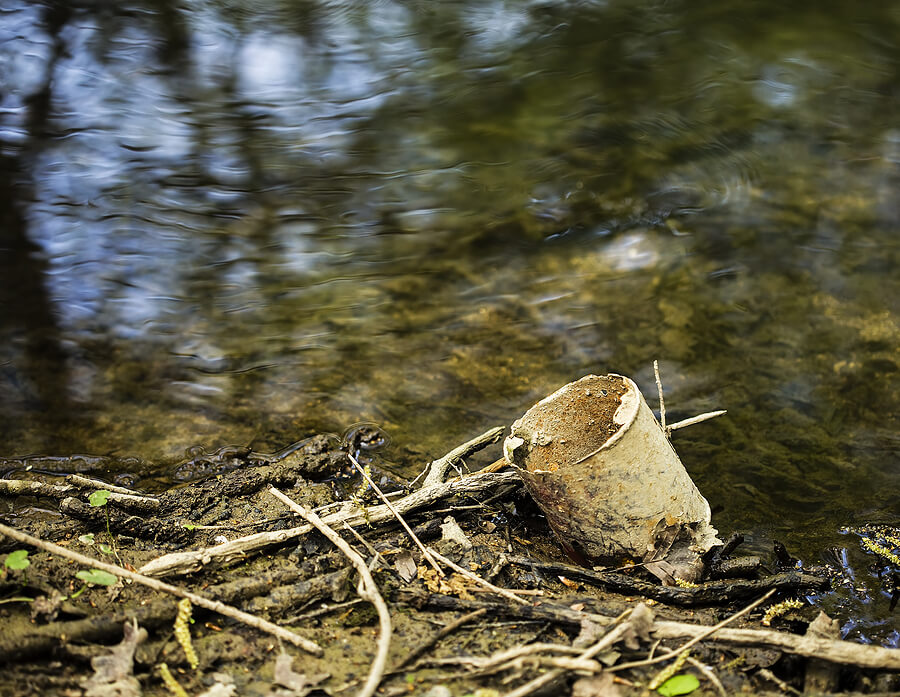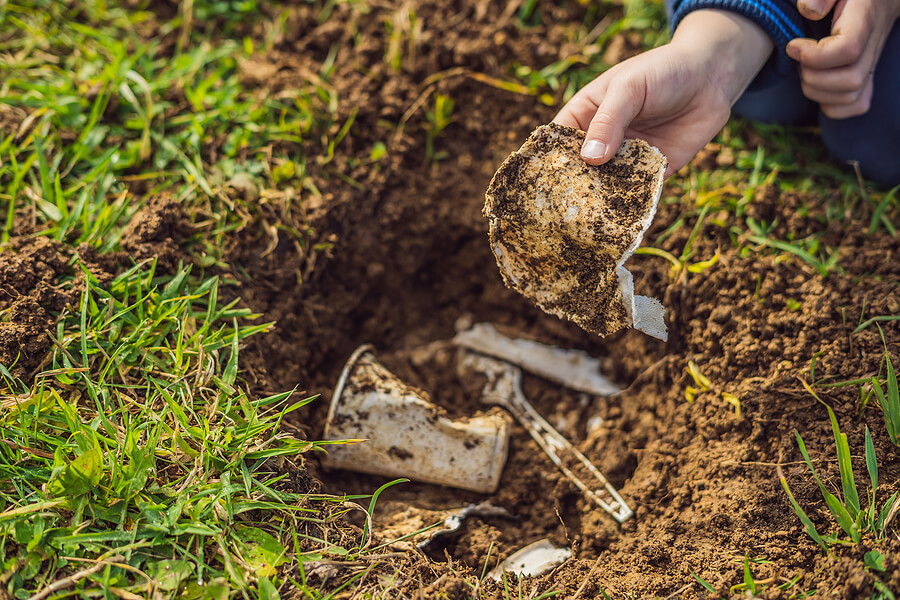Most of us understand the environmental impact of landfill sites. Decomposing waste is one of the biggest generators of dangerous greenhouse gases and has been linked to global temperature increases and the climate crisis.
Despite this, many of our everyday items still end up at landfill sites. Materials like plastic and metal take a long time to break down and erode, meaning our rubbish could exist far longer than we do.
By raising awareness of how long common items take to decompose, it’s hoped that more people will endeavour to reduce, reuse and recycle, which will result in less waste going to landfills.
How long does plastic take to decompose?
Many single-use items are made of plastic. While some plastics are reusable or recyclable, packaging and thicker plastic items are not.
Plastic can take anywhere from 20 to 500 years to decompose, depending on the material’s structure and environmental factors such as sunlight exposure.
How long does a plastic bag take to decompose?
Plastic bags are usually made out of one of three materials: high-density polyethylene (HDPE), low-density polyethylene (LDPE), or linear low-density polyethylene (LLDPE). The strongest is HDPE used to make sturdy supermarket bags and wrapping that can easily tear. LLDPE isn’t as strong, so it is used to make plastic bags to carry clothes or other light items.
It takes around 20 years for a standard supermarket plastic bag to fully decompose.
How long does it take a plastic water bottle to decompose?
Traditional plastic bottles are made out of polyethylene terephthalate (PET). It’s a lightweight and flexible material that doesn’t decompose easily, mainly because bacteria cannot consume and break down the chemicals used in PET.
A plastic bottle made from PET takes around 450 years to decompose. Plastic erodes into smaller, often undetectable nanoplastics, which can make their way into our ecosystem. In recent years, traces of nano and microplastics have been discovered in remote areas of the Arctic Ocean and even within the placentas of unborn babies.
How long does it take metal to decompose?
Compared to plastic, metal or stainless steel packaging is a much more environmentally friendly material.
Metal can be recycled endlessly and is easy to repurpose at home. Specialist recycling facilities melt the metal down, turning it into a pure raw material again.
However, if your metal items aren’t properly recycled, they could be placed in landfill, where they will take a long time to decompose.
Steel takes approximately 50 years to decompose, while aluminium can last up to 200 years.
How long does it take for stainless steel to decompose?
Stainless steel is designed to be rust-resistant. It’s a great material to use in the home for items and structures you want to maintain, but not so good when the item ends up in landfill.
Struggling to break down means it can take stainless steel anywhere from 100 to 1000+ years to decompose into a more natural element.
How long does it take glass to decompose?
Glass is a tricky product to evaluate. Glass jars, bottles, and containers also have an unlimited recycling lifecycle. However, their robust nature means they are virtually impossible to decompose.
Some studies estimate it takes around one million years for glass to break down, while Pyrex and other heat-resistant cookware can take even longer.
Even when glass is recycled, it often isn’t done correctly. Coloured glass can only be recycled together, making this process even more complicated.
How long does it take for wood to decompose?
The natural decomposition of wood is an important part of the carbon cycle of nature. However, products made with wood fibres, such as cardboard, paper and plywood, don’t break down naturally.
Most plywood – used in affordable furniture –takes around 1-3 years to decompose fully. However, the glue used in the product means it will decompose at a slower rate.
Lumber is a sturdier type of wood and is mainly used for structural purposes. Though this material has more natural components, the heavy element of lumber means it takes around 10-15 years to decompose. The use of chemicals in some lumber furniture decreases the decomposition rate even further.
Cardboard is one of the most commonly recycled wood-based products, and it’s easy to break down and reuse the pulp in more products. However, if your cardboard packaging is sent to landfill, it can take between 3 months to several years to decompose.
Paper is another easy-to-recycle product that can be reused up to six times before the fibres become too weak. Once paper ends up in landfill, it only takes around 2 to 6 weeks to decompose and comes with a small carbon footprint.
How does biodegradable plastic decompose?
Biodegradable plastic was developed as an eco-friendly alternative to help tackle the rising issue of plastic pollution. Many household names now use biodegradable packaging – but how does it work?
To be classed as ‘biodegradable’, the plastic must degrade into carbon dioxide, water, biomass, or minerals when exposed to natural elements. The items are then returned to nature once their useful life has ended, without harming the environment.
Microbes can break down biodegradable without producing methane as a by-product, even in landfill. Most regular items sent to landfill will emit methane, one of the most harmful greenhouse gases.
The rate of decomposition depends on the environment. Most biodegradable plastics will decompose faster in significantly hot or wet conditions. Despite their sustainable label, biodegradable plastics still need to be disposed of properly.
Help do your bit for the environment with Forge Recycling and avoid sending your recyclable items to landfill. We can provide your organisation with a flexible, innovative and reliable waste disposal process to ensure your rubbish is properly taken care of.


